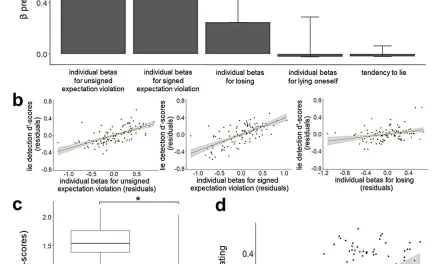New research suggests surprising similarities between brain cells and muscle signaling, potentially revolutionizing our understanding of learning and memory.
Scientists at the Lippincott-Schwartz Lab have discovered that subcellular structures responsible for muscle contraction may also play a crucial role in signal transmission in the brain, affecting learning and memory.
“Einstein once likened using his brain to using a muscle, and in some ways, this research supports that idea,” said Jennifer Lippincott-Schwartz, Senior Group Leader at Janelia. “The same molecular machinery appears to be at work, albeit with different functions.”
Discovery of a New Role for the Endoplasmic Reticulum
The connection between brain and muscle cells first emerged when researchers observed an unusual, repeating pattern in the endoplasmic reticulum (ER) within neurons. Lorena Benedetti, a research scientist in the Lippincott-Schwartz Lab, detected a striking ladder-like structure within the dendrites—the branch-like extensions on neurons responsible for receiving incoming signals.
Simultaneously, high-resolution electron microscopy images of fly neurons revealed similar regularly spaced ER structures. Given that the ER is typically a vast, dynamic network, these findings prompted further investigation into their function.
“In science, structure often dictates function,” Lippincott-Schwartz explained. “These structures were so distinct that we had a strong suspicion they must serve an essential role.”
Parallels Between Muscle and Brain Cell Signaling
To understand the role of these structures, researchers looked at another area where ladder-like ER formations exist: muscle tissue. In muscles, the ER and plasma membrane form periodic contact sites, controlled by the molecule junctophilin. The team discovered that dendrites contain a similar form of junctophilin, regulating contact sites between their ER and plasma membrane.
Further analysis showed that the same molecular machinery controlling calcium release in muscles, which drives contraction, was also present in dendritic contact sites. This led scientists to hypothesize that these structures in neurons might function similarly by amplifying and transmitting calcium signals, crucial for communication between brain cells.
“We suspected that the contact sites along the dendrites might act like a repeater on a telegraph machine, receiving, amplifying, and propagating signals over long distances within the neuron,” said Benedetti.
Calcium Signaling and Memory Formation
The research team discovered that this process begins when a neuronal signal triggers calcium entry into the dendrite through voltage-gated ion channels positioned at contact sites. This initial calcium influx then stimulates further calcium release from the ER at these sites.
This influx attracts and activates CaMKII, a kinase protein known to be vital for memory formation. CaMKII modifies the plasma membrane, strengthening or weakening neuronal connections in a process known as synaptic plasticity, which underlies learning and memory.
The process repeats along the dendrites, relaying the signal to the cell body, where the neuron determines how to respond and communicate with other neurons. This finding provides valuable insights into the mechanisms of long-distance signal transmission in neurons and could advance our understanding of memory-related disorders such as Alzheimer’s disease.
“We are uncovering a previously unknown mechanism for calcium signal amplification within neurons,” Lippincott-Schwartz noted. “These beautifully structured subcellular networks have a profound impact on brain function.”
Implications for Neuroscience and Disease Research
The study sheds light on the molecular underpinnings of synaptic plasticity and provides a fresh perspective on how neurons process information. Understanding this process at a fundamental level could pave the way for new treatments for neurodegenerative diseases where calcium signaling and synaptic plasticity are disrupted.
Disclaimer: This article is based on scientific research and is intended for informational purposes only. The findings discussed are part of ongoing studies and should not be considered definitive medical advice. Readers are encouraged to consult medical professionals for health-related concerns.
Reference: Lorena Benedetti et al., “Periodic ER-plasma membrane junctions support long-range Ca2+ signal integration in dendrites,” Cell (2024). DOI: 10.1016/j.cell.2024.11.029












